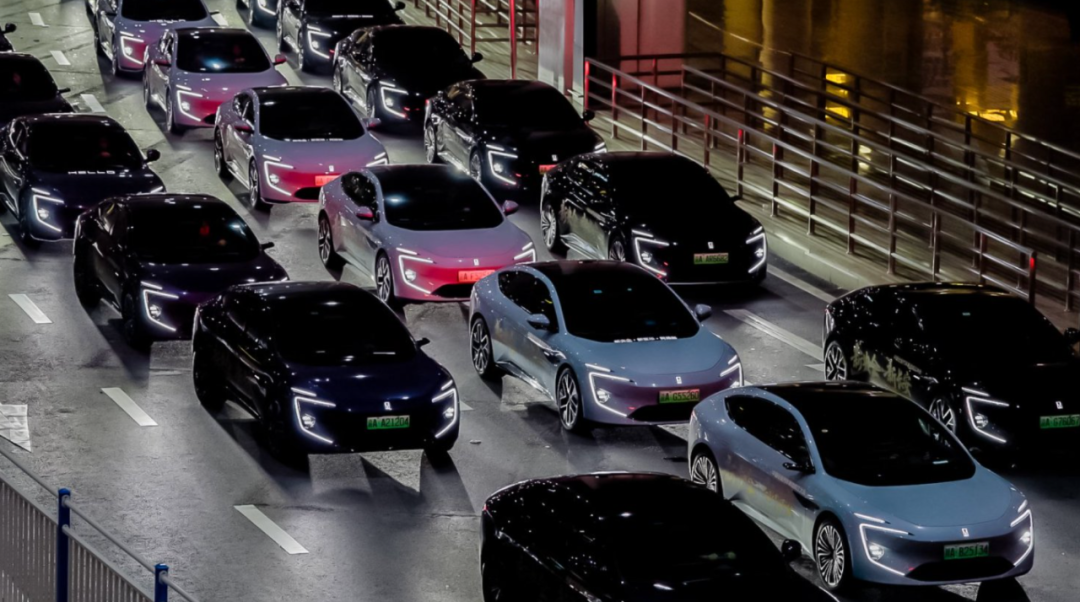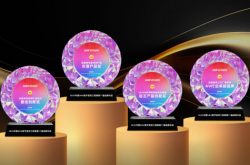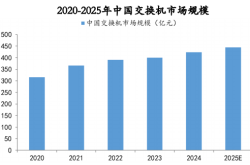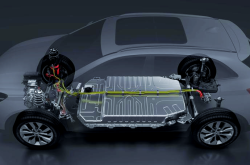Aiming for the Top 10 Globally: The Emergence of Another Centrally-Administered State-Owned Automaker
![]() 08/08 2025
08/08 2025
![]() 555
555
On July 29, China Changan Automobile Group Co., Ltd. was officially established in Chongqing.
"Changan Auto used to have too few and too small resources, and now suddenly it feels inexhaustible," said Zhu Huarong, secretary of the Party committee and chairman of China Changan Automobile Group, at the group's first media communication conference on July 30.
According to the strategic blueprint unveiled by Zhu Huarong at the conference, China Changan Automobile Group aims to produce and sell 5 million vehicles by 2030, with new energy vehicle sales accounting for over 60% and overseas sales accounting for over 30%. The group strives to become one of the top 10 global auto brands. To achieve this goal, the new Changan Group will invest 200 billion yuan in the new auto sector over the next decade and add a scientific and technological innovation team of 10,000 people to facilitate technological exploration and product monetization.
From an industry perspective, this goal demonstrates ambition while also presenting challenges. According to public data, Changan Auto sold a total of 2.6838 million vehicles in 2024. This means that by 2030, Changan Auto needs to double its current production and sales scale. For this year, Changan Auto has set a sales target of 3 million vehicles, including 1 million new energy vehicles.
The Birth of the Third Centrally-Administered State-Owned Automaker
As early as February 9, 2025, Changan Auto announced that its controlling shareholder, China South Industries Group Corporation (CSGC), was planning a reorganization with other state-owned enterprises. This sparked widespread speculation in the industry about potential automotive industry integration. The following day, the further disclosure of the "Indicative Announcement on the Intended Change of Controlling Shareholder" also hinted at upcoming reforms.
On June 5, the reorganization process achieved a significant breakthrough. Changan Auto's announcement revealed that with the approval of the State Council, CSGC underwent a split: its automotive business was spun off into an independent centrally-administered state-owned enterprise, with the State-owned Assets Supervision and Administration Commission of the State Council (SASAC) directly fulfilling the duties of an investor.
On June 23, Changan Auto announced that its controlling shareholder, "China Changan Automobile Group Co., Ltd.," changed its name to "Chenzhi Automotive Technology Group Co., Ltd." Zhu Huarong further explained at the communication conference that the name change of Chenzhi Group was to relinquish the "China Changan" name.
On July 29, with the approval of the State Council, China Changan Automobile Group Co., Ltd., a centrally-administered state-owned automaker with SASAC directly fulfilling the duties of an investor, was officially established. Up to this point, Changan Automobile Group became the third centrally-administered state-owned automaker after China FAW Group and Dongfeng Motor Corporation. Zhu Huarong bluntly stated that the establishment of China Changan Automobile Group is a significant strategic deployment of the Party Central Committee based on the overall situation of national development, sizing up the situation and deeply promoting the reform of state-owned assets and state-owned enterprises.

Image source: China Changan Automobile Group
It is worth noting that although the industry often referred to FAW, Dongfeng, and Changan as the "three major centrally-administered state-owned enterprises" in the past, Changan Auto has always been a secondary department under a centrally-administered state-owned enterprise, essentially different from the former two. After this upgrade, Changan Auto has truly been upgraded from a subsidiary automaker of CSGC to an independent centrally-administered state-owned enterprise directly under SASAC, with no difference in level categories. The new company has a registered capital of 20 billion yuan, lower than that of FAW Group (35.4 billion yuan) but higher than that of Dongfeng Group (15.6 billion yuan).
From a business structure perspective, China Changan Automobile Group was spun off from the original CSGC and has 117 subsidiaries and branches. Its main business operations include complete automobiles and auto parts, auto sales, financial and logistics services, motorcycles, etc. Zhu Huarong stated that the new centrally-administered state-owned enterprise will focus on creating new types of productivity such as intelligent automotive robots, flying cars, and embodied intelligence in the future, exploring a new three-dimensional travel ecosystem on land, sea, and air, accelerating global development, and accelerating the development of five major regional markets in Southeast Asia, the Middle East and Africa, Central and South America, Eurasia, and Europe.
"The establishment of China Changan Automobile Group is conducive to accelerating the development of world-class auto groups with global competitiveness and better supporting the high-quality development of the intelligent connected new energy auto industry," Zhu Huarong emphasized. According to data, Changan Auto Group has globally planned 20 overseas factories in Brazil, Indonesia, etc., with 9 having been completed and put into production. The first overseas new energy vehicle base, Changan's Rayong factory in Thailand, was put into production in May.
In terms of technological research and development and industrial investment, the group has formulated an aggressive plan for the next decade: In the next ten years, China Changan Automobile Group will invest a cumulative total of 200 billion yuan in the new auto sector, add a scientific and technological innovation team of 10,000 people, build a dedicated platform for new energy vehicles with sales capacity of over 1 million units, make breakthroughs in core technologies such as battery, electric drive, and vehicle control systems, chips, and intelligent driving, establish a complete innovation system from underlying research and development, platform architecture, core components, to terminal products and business models, and realize the transition from technological exploration to product monetization.
In the layout of cutting-edge technologies, Changan will extend its SDA (Smart Driving Assistance) technology to the fields of flying cars and humanoid robots, planning to complete the test flight of flying cars by the end of 2025 and achieve mass production of humanoid robots by 2028, gradually building a three-dimensional travel solution on land, sea, and air.
Regarding this transformation, China International Capital Corporation Limited (CICC) stated in a research report that after the establishment of China Changan Automobile Group, China officially formed three centrally-administered state-owned auto groups, conforming to the trend of the country promoting the reform of centrally-administered state-owned enterprises and optimizing the layout of state-owned capital, which helps to concentrate resources and enhance the competitiveness of the auto industry. Looking ahead to the second half of the year, the dense launch of multiple models by the group is expected to drive the sales of new energy vehicles to continue to climb. Maintain the "outperform industry" rating for Changan Auto and maintain the target price of 15.5 yuan for A-shares.
Strategic Opportunities and Real Challenges
The official establishment of China Changan Automobile Group Co., Ltd. is a milestone event that elevates Changan Auto's status and strategic position. The establishment of the new centrally-administered state-owned enterprise is conducive to Changan integrating related resources, further strengthening, optimizing, and expanding state-owned enterprises; it is conducive to Changan better participating in international competition; and it is also conducive to Changan strengthening technological breakthroughs in key areas and enhancing independent innovation capabilities.
This strategic empowerment has been specifically transmitted to its AVIATAR, DEEPAL BLUE, and CHANGAN EVOLVE brand matrix.

Image source: China Changan Automobile Group
As a pioneer in high-end intelligent electrification, AVIATAR will accelerate its layout by relying on the group's resource integration advantages: It plans to launch its first million-yuan six-seater flagship product and two new models in 2026. By 2030, AVIATAR will launch 17 new products, building a complete product matrix covering sedans, SUVs, and MPVs, and consolidating its position in the high-end market.
DEEPAL BLUE has entered a period of intensive product launches. Deng Chenghao, CEO of DEEPAL BLUE, disclosed at the media communication conference: "Starting from August 1, we will launch a new product every half month for about two months, and DEEPAL BLUE will enter a new product cycle." Among them, the DEEPAL BLUE S05 620km version was officially launched on August 1, and the new model DEEPAL BLUE L06 will soon be unveiled. This model will come standard with LiDAR across the board, strengthening its competitive edge in intelligent driving.
As the core pillar of the group's future development, CHANGAN EVOLVE focuses on the dual goals of technological breakthroughs and scale expansion. Its core technology layout covers key areas such as Tianshu intelligent driving assistance, Tianshu cockpit, Tianshu chassis, smart new Blue Whale power, and Jinzhongzhao battery; on the product side, it plans to launch the EVOLVE Q07 laser version (to be launched in September), EVOLVE A06 (to be launched in the fourth quarter), and the all-new pure electric small SUV B216 (to be launched in the fourth quarter) in the second half of the year. According to the plan, CHANGAN EVOLVE strives to achieve a monthly sales breakthrough of 50,000 units, aiming to enter the top 5 mainstream new energy brands.
It is worth noting that unlike the resource integration logic of traditional centrally-administered state-owned enterprises, "new centrally-administered state-owned enterprises" bear more responsibility for leading industrial transformation and building future competitive advantages. This requires Changan Auto to accelerate changes in organizational structure, operational models, and capital mechanisms. More importantly, it needs to form a closed loop of future-oriented capabilities in key areas such as technological innovation, intelligent manufacturing, and overseas expansion strategies.
This strategic value has been initially verified in Changan's recent market performance. In the first half of this year, Changan's cumulative sales reached 1.355 million units, setting a new record high in the past eight years. Among them, new energy vehicle sales grew strongly, reaching 450,000 units in half a year, a year-on-year increase of 48.8%, indicating that its new energy transition has entered an acceleration stage.
At the same time, overseas sales exceeded 300,000 units in the first half of the year, a year-on-year increase of 49%, with significant results in the layout of markets such as Southeast Asia and Europe. Changan Auto's new energy factory in Thailand has achieved localized production, and its first right-hand drive electric vehicle, DEEPAL BLUE S7, ranked among the top three in sales after its local launch; in the European market, through cooperation with top local dealers, the AVIATAR brand is steadily opening up the mid-to-high-end market with the "intelligent luxury" label.
However, it is worth noting that in 2024, Changan Auto's revenue was 160 billion yuan, although it set a new record high, its net profit attributable to shareholders of the parent company fell by 35.37% year-on-year to 7.321 billion yuan, and its net profit after deducting non-recurring gains and losses shrank to 2.587 billion yuan. The reason is that fuel vehicles, which account for over 70% and serve as a profit cow, saw a significant decline in sales; although new energy vehicle sales showed a promising growth trend, they have not yet escaped the loss curse of "increasing revenue without increasing profits." As the automotive industry ecosystem changes, so does the profit model. Zhu Huarong stated that the original single profit model relying on complete vehicles now requires the profit model of the automotive industry ecosystem to be rebalanced and reconstructed. "Without achieving breakthroughs in dimensions such as the ecological model, it will be difficult for enterprises to stand out in this round of competition and transformation." For Changan Auto Group, how to improve profitability while maintaining the growth of new energy vehicle sales is an important issue that needs to be addressed in future development. And this is also a problem that China's auto industry generally needs to solve.








